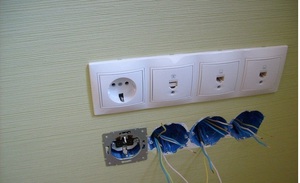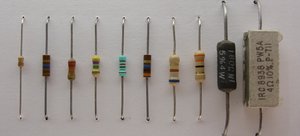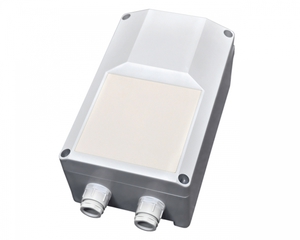Battery chargers: a brief description of car batteries and criteria for selecting chargers
Everything, new and already steel, rechargeable batteries are often discharged. Their constant charging usually comes from the generator and occurs directly while the car is moving. Long downtime at any time of year, long winter parking, radio running in standing cars, "Twitching" in city traffic jams, sudden changes in ambient temperature and frequent off-road driving, - All these factors inevitably lead to battery discharge.
Therefore, every driver should have in his garage (trunk) "Lifesaver" for a quick solution suddenly there were inconveniences.
Of course, inexperienced motorists will want to buy a second battery for insurance, but this radical approach may be ineffective. Having acquired for ignorance dry-charged, and not flooded the battery, you can "step on the rake" a second time. The dry-charged model of the accumulator though remains to 5 years, but will demand from 3 to 10 hours of extra time, for its deconservation by impregnation with a special electrolyte.
So, it would be wiser to buy immediately, charger, which will quickly restore the working condition of the car battery (Battery).
Car batteries
The perpetual battery does not yet exist, but modern technology has already extended the life of this automotive device from two to 5?7 years. For the right choice of charger (Salary) the car owner must know exactly the parameters of his car battery.
Capacity
Nominal electric capacity of the battery is the force of electric charge, issued by a fully charged battery when discharged to the minimum allowable voltage. The amount of capacity is indicated in non-system units - A?h (ampere-year).
A type
Depending on the additives used in the electrode material, modern car starter batteries are divided into the following types:
- Sb - antimony, lead-acid, with liquid electrolyte - 12 V - serviced;
- AGM - with helium electrolyte or with absorbent vitreous material - 15 V;
- Ca / Ca - calcium - 16 V - serviced;
- Ca +, Ca / Sb - hybrid - according to the passport - low maintenance.
Charge current
All car batteries are charged only with a constant, rather than alternating current, in three ways: 1) constant current, 2) at constant voltage, 3) combined (optimal) - first, direct current at alternating voltage, and at the end of the process under constant voltage with decreasing current.
Chargers
The principle of operation of chargers is the same. Getting power from the outside, the charger straightens and at the same time reduces values of force and voltage of current almost to necessary sizes for automobile accumulators. Restoring battery power, goals are pursued not only by the very start of the engine, but also its launch without jerks, smooth set of revolutions to nominal speed, as well as ensuring a slow steady stop of its work.
Power supply
Depending on the power supply of the car battery, there are the following types:
- from the cigarette lighter - 12 V;
- pulse AT and ATX units - from 6 to 24 V;
- from the mains - 220 V;
- autonomous (with built-in battery);
- on solar panels;
- dual systems for heavy machinery.
Frequency of use and nature of loads
The most durable and suitable for intensive use, are considered to be the memory of stationary models of the professional line. The simplest household copies for motorists - compact and mobile, but because of a primitive device (output voltage regulator, ammeter, diode bridge, transformer) require extra attention throughout the charging process. Combined models are designed for emergency maintenance of truck batteries.
Choice
Before buying a charger, you need to decide on the following indicators and additional functions of the memory:
- Charger output voltage. Charger 6-12-12 24 V, covers the whole class of batteries and is considered universal. ZU 6 V is used for motorcycles and boats, a 24 V - for trucks, tractors, buses.
- Battery capacity and charging time. Based on the factory nominal capacity (A?h) the requirement to the given out maximum current from the charger is defined. The capacity value is specified by the manufacturer on the battery case. When dividing this value by the power of the purchased charger, you can calculate the minimum possible time of full charging of the battery from this memory. AND, the higher the power of the memory, the more powerful the battery it will be able to charge.
- Output current regulation on the memory. Possibility of step-by-step or smooth regulation of output currents, allows you to use one charger for different types of batteries.
- Limiting the maximum current of the memory. The switch with the limiter will protect from overcharges and undercharges, will significantly extend battery life.
-
Choice of type - transformer or pulse. Classic transformer chargers are the most reliable, but very cumbersome. It is better to buy a transformer model with an automatic control system. Pulse or inverter models are convenient not only for full process automation, but also compact dimensions.
-
Choice of model - prestarting (recharging) or starter-chargers. Rechargeable models of chargers charge the battery for a long time, but in gentle mode and retain the maximum properties of the battery. Start-up and charging options work as usual, and in accelerated mode. They are able to fully charge a discharged battery and even start a car engine without a battery.
-
Express recovery function. The presence of this function allows using the method of desulfation of short-term pulses, completely clean the battery plates of lead sulfate and restore the factory battery capacity.
-
Charge in automatic mode. The undoubted advantage of a fully automated charging process is undeniable - not only frees up time, but also the errors of the human factor are removed - the microprocessor accurately makes measurements; sets the required voltage and current parameters, depending on the charging stage; monitors temperature indicators.
-
Availability of winter mode and display. Temperature compensation function - innovative technology, which allows you to charge a completely cold battery, which significantly saves time. The advantages of having a liquid crystal display with night illumination do not require explanation.
-
Level of protection class. Perfectly, if your memory will be able to block its inclusion if the terminals are connected incorrectly, automatically turn off when fully charged, have short circuit protection, voltage drops and surges in the network.
Charging sequence
Recharging or full charging of the battery outside the car is carried out when the electrolyte density falls below 1,22 g / cm? or in case of impossibility to start the motor, according to the following scheme:
-
check for distilled water, which may be needed at the end of the process;
- open the filler neck of the battery;
- connect "+" first, and then the "-" battery terminals and charging;
- turn on the power of the charger.
If the charger is not automated, necessary, each 2 years, independently monitor the amount of incoming charging current (not higher than 1/10 from the nominal capacity of the battery); operating voltage (not higher 16 V); density and t of electrolyte (optimal = +30 ° C, borderline +45 ° C).
By the time of full charge, the value of the charging current should fall. The battery is considered charged if during 2 hours voltage and electrolyte density remain unchanged, and the release of gases from all necks becomes uniform and moderate.
After the process follows:
- turn off the power of the memory;
- disconnect "-", and then the "+" terminal;
- check the electrolyte level in each section (if necessary, top up with distillate);
- tighten the necks of each section.
Precautions
If the battery charging process is not in the fresh air, then the room must be equipped with a powerful supply and exhaust ventilation system.
Remove from the car battery only when the engine is off, and when charging in the body of the car - do not just make sure, that the engine is shut down, but also that all electrical cables are disconnected.
Do not approach the rechargeable battery too close with a lit cigarette, another source of open fire or sparks - a mixture of oxygen and hydrogen is released from the necks, harmful and very explosive.
Making your choice when buying a car battery charger, do not save. The costs incurred will be recouped not only by simple and convenient operation, but will significantly extend the life of the battery.



